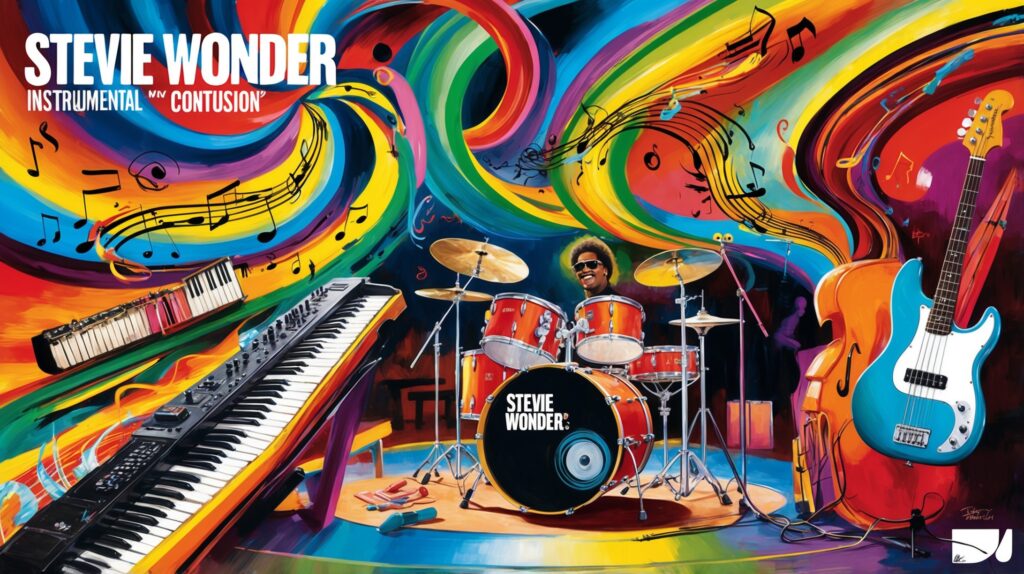Stevie Wonder | Contusion
Stevie Wonder: The Visionary Virtuoso Behind ‘Contusion’
Explore the multifaceted artistry of Stevie Wonder, the genius behind ‘Contusion’ and his pivotal role in the music landscape of the 1970s.
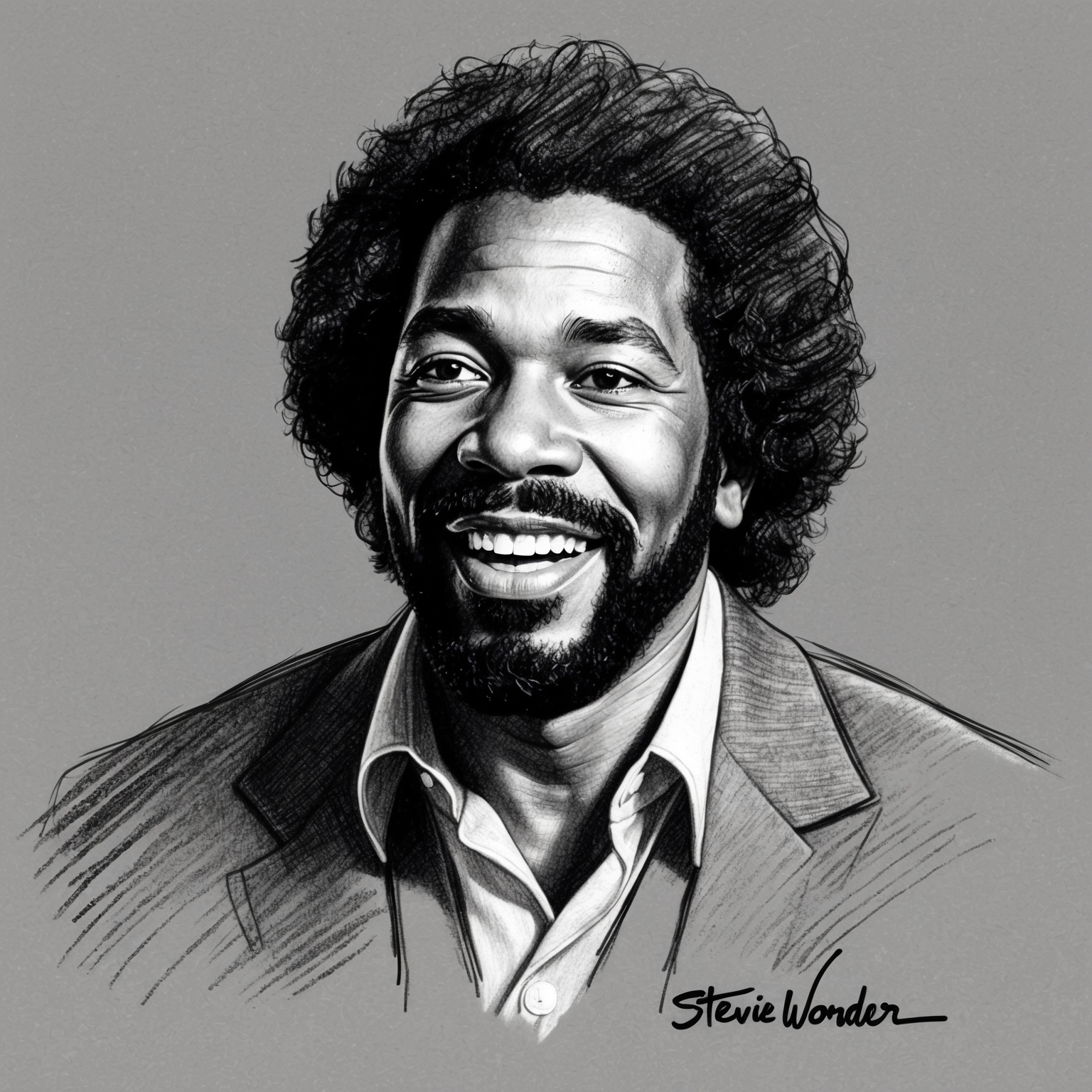
Stevie Wonder, one of the music industry’s most legendary figures, is known for pushing the boundaries of sound and creativity. Born Stevland Hardaway Judkins on May 13, 1950, in Saginaw, Michigan, Wonder has dazzled audiences since childhood. He demonstrated prodigious talent, mastering the piano, harmonica, and drums by the age of 10. Signing with Motown’s Tamla label at just 11 years old, his early years were marked by innovation and youthful exuberance, which would eventually evolve into a mature and transformative artistry.
The era surrounding the release of ‘Contusion’ in 1976 was particularly significant in Stevie Wonder’s career. Situated within the ambitious double album Songs in the Key of Life, ‘Contusion’ exemplified his departure from conventional pop forms, diving into the depths of jazz fusion and instrumental complexity. This period was marked by his embrace of various musical genres, reflecting the dynamic and socially charged atmosphere of the mid-1970s. Wonder’s exploration during this time not only showcased his versatility but also his willingness to incorporate diverse musical elements, resonating with the cultural and political themes of the era.
Stevie’s collaborations were a cornerstone of his creative process, especially evident in this landmark album. Working with a talented array of musicians, Wonder broke new ground. ‘Contusion’, an instrumental masterpiece, allowed him to experiment with his sound in a way that complemented his more lyrical compositions. As a visionary artist, his incorporation of innovative sounds and complex structures during this period laid the foundation for his lasting impact on the music industry.
Stevie Wonder’s Compositional Genius
Explore the compositional genius of Stevie Wonder, the mastermind behind ‘Contusion,’ a testament to his versatile artistry and innovation in jazz fusion.
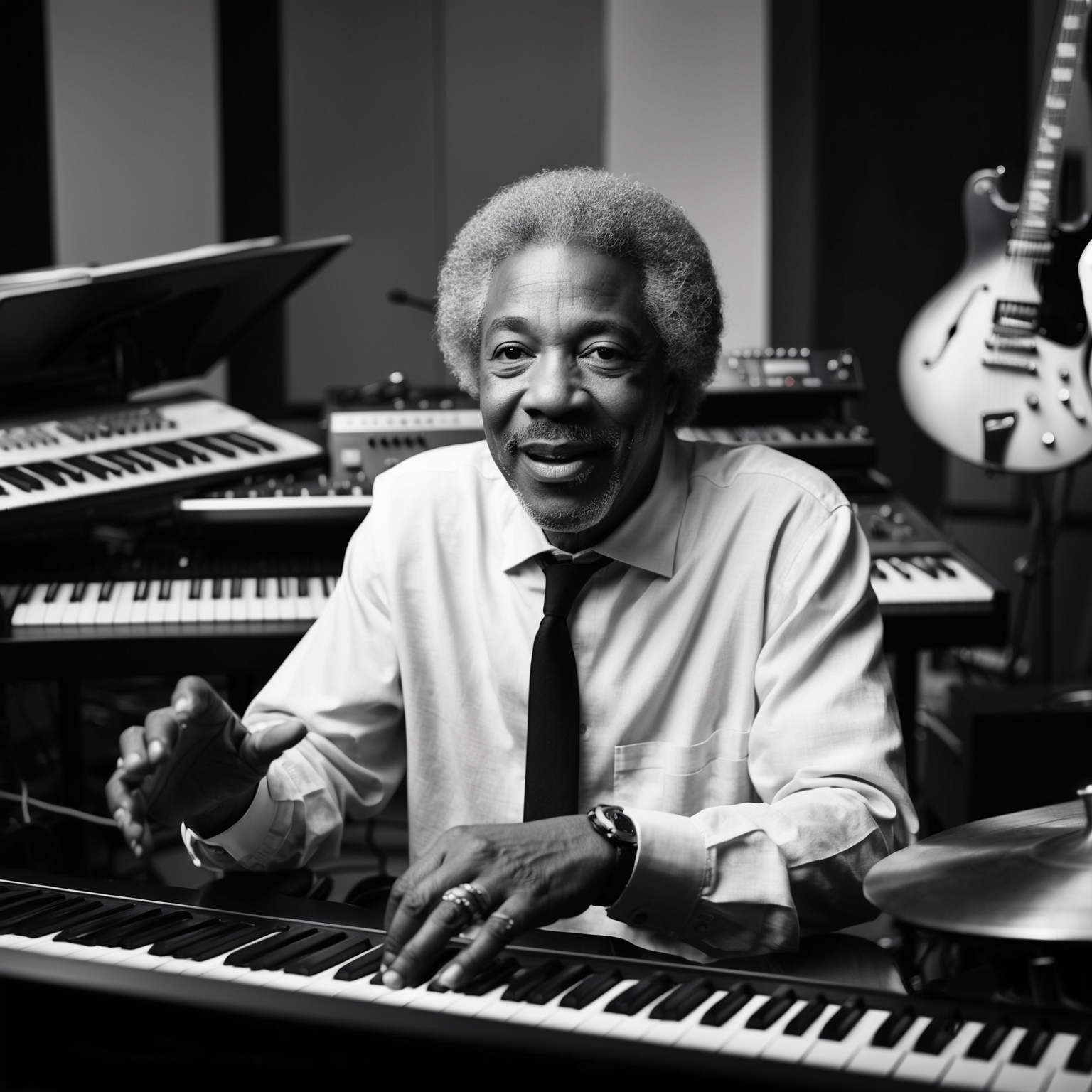
Stevie Wonder, the musical genius behind ‘Contusion,’ needs little introduction. Having achieved prodigy status from a young age, Stevie Wonder’s career spans multiple decades, genres, and styles, marking him as one of the most versatile composers of the 20th century. Born Stevland Hardaway Morris in Saginaw, Michigan, Wonder’s musical journey began in childhood. He was just 11 years old when he was signed to Tamla, an imprint of Motown Records. Throughout his career, he has woven elements of soul, pop, R&B, funk, and jazz into his work, leaving a profound impact on each genre.
Wonder’s compositions are renowned for their intricate melodies, complex rhythms, and emotional depth. His music frequently explores social, spiritual, and romantic themes with an unparalleled authenticity. While Stevie Wonder was heavily influenced by the great R&B, blues, and gospel musicians who came before him, he also drew inspiration from diverse sources such as classical music, jazz, and even the sound of daily life. His ability to blend these influences into a cohesive sound is a testament to his brilliance as a composer.
His role as both composer and performer on ‘Contusion,’ an instrumental track, highlights his virtuosity in crafting music without the need for lyrics. ‘Contusion’ showcases Wonder’s expertise in jazz fusion—a genre that blends jazz improvisation with rock music’s energy and electronic instruments. This piece is a testament to Wonder’s skills as a composer, using synthesized soundscapes, energetic bass lines, and spirited drum patterns to create an engaging auditory experience. The harmonic complexity and vibrant instrumentation reveal the innovative techniques Wonder employed, demonstrating his contribution to the evolution of modern music.
Recognition and Renditions
“Contusion” by Stevie Wonder may not have mainstream awards, but it’s celebrated by musicians for its intricate composition, with numerous covers by jazz and fusion artists, and remains a staple in live performances.

When it comes to the song “Contusion” by Stevie Wonder, the landscape of awards and accolades is somewhat unique compared to some of his other iconic tracks. Though “Contusion” may not have bagged any major awards or nominations, its influence resonates in different realms, particularly in its recognition among musical artists and aficionados for its experimental style and technical prowess. This instrumental track showcases Wonder’s genius with profound musicality and an intricate blend of elements, earning it a lasting legacy of respect and admiration within the music community.
Aside from any formal accolades, recognition can often come in the form of covers and interpretations by other artists. “Contusion” has seen a number of renditions, especially by jazz and fusion musicians who appreciate Stevie Wonder’s complex compositions. These artists often highlight “Contusion” as a piece that challenges them to push their boundaries and explore new musical terrains, reinforcing the song’s lasting impact despite its lack of mainstream commercial awards.
In terms of media appearances, “Contusion” may not have made its way into movie soundtracks or video games as prominently as other Stevie Wonder hits. However, its intricate melodies and improvisational flair make it a popular choice for live performances and jam sessions across the globe. The song’s instrumental nature allows it to transcend lyrical storytelling, speaking through pure musical expression and showcasing Wonder’s unparalleled talent in the process.
Exploring the Chart Journey of ‘Contusion’
Explore the chart dynamics of ‘Contusion,’ an intricate instrumental by Stevie Wonder, which, despite not being a standalone single, contributed significantly to the success of his album.
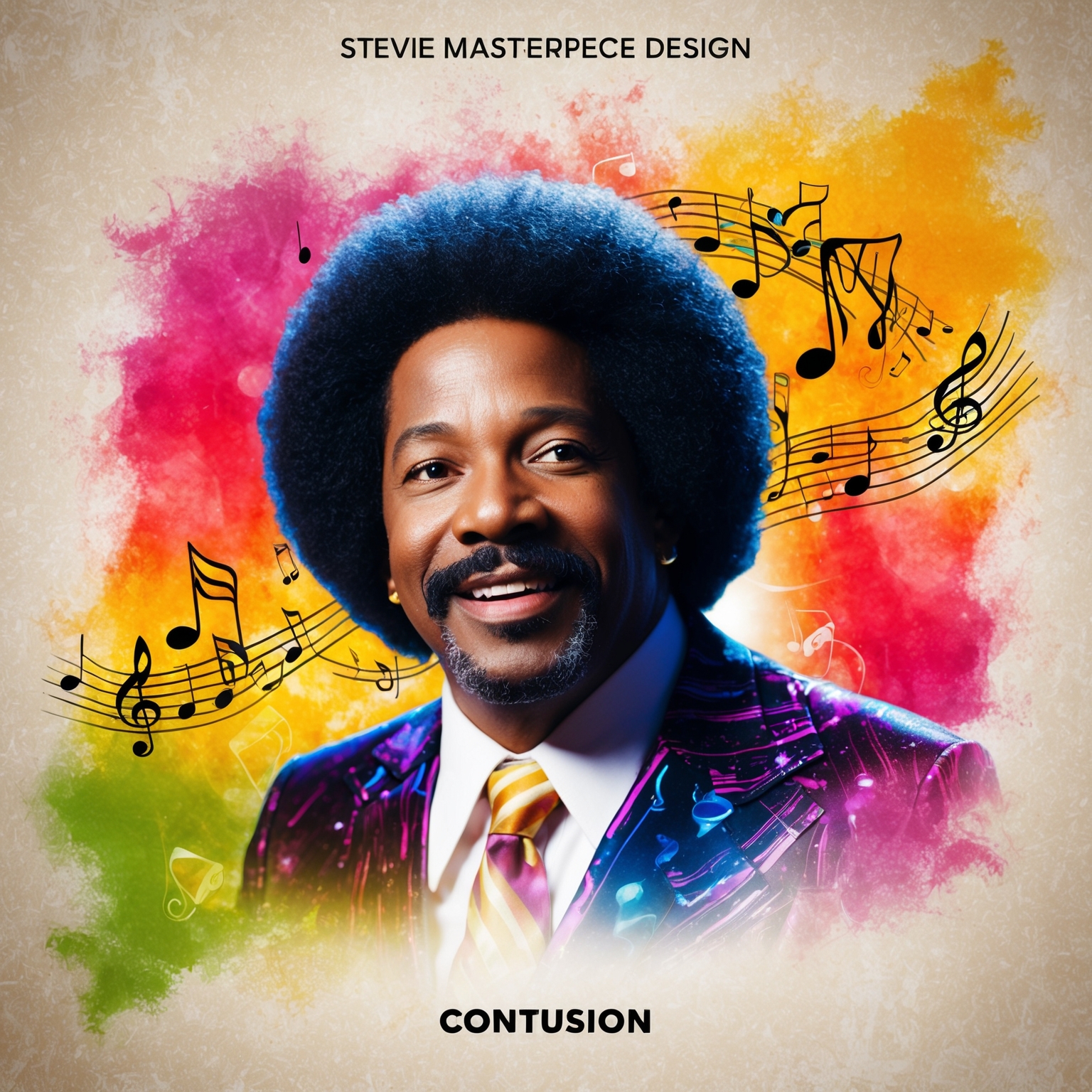
Released in 1976 as part of Stevie Wonder’s celebrated album “Songs in the Key of Life,” “Contusion” showcases a remarkable chapter in Wonder’s musical journey, albeit one that didn’t center stage on the charts as a single. As an instrumental piece, ‘Contusion’ faced a unique challenge in competing against vocal tracks more typical of pop chart standings during the mid-70s. Despite not being released as an individual single, it remained integral to the album’s success, contributing to an overall body of work that soared in popularity and acclaim.
The song was part of an album that reached No. 1 on the Billboard 200 and maintained that position for an impressive period, which underscored Wonder’s significant foothold in the music industry. The album’s eclectic mix of tracks, including ‘Contusion,’ enabled it to achieve legendary status, with “Songs in the Key of Life” often cited as one of Stevie’s magnum opuses.
Unlike the more commercially promoted singles from the album, such as ‘Sir Duke’ and ‘I Wish,’ ‘Contusion’ became a piece celebrated particularly among jazz enthusiasts and instrumental aficionados. Although it didn’t earn chart-topping positions or significant airplay typically associated with pop hits, its intricate composition and technical prowess demonstrated Stevie Wonder’s versatility as an artist. The success of the album as a whole was a testament to Wonder’s unmatched creativity and established him as a defining voice of his generation.
Capturing ‘Contusion’: A Unique Visual Experience
Explore the visual interpretations of ‘Contusion’ within fan-created videos and live performances, highlighting the song’s enduring appeal and creative influence.
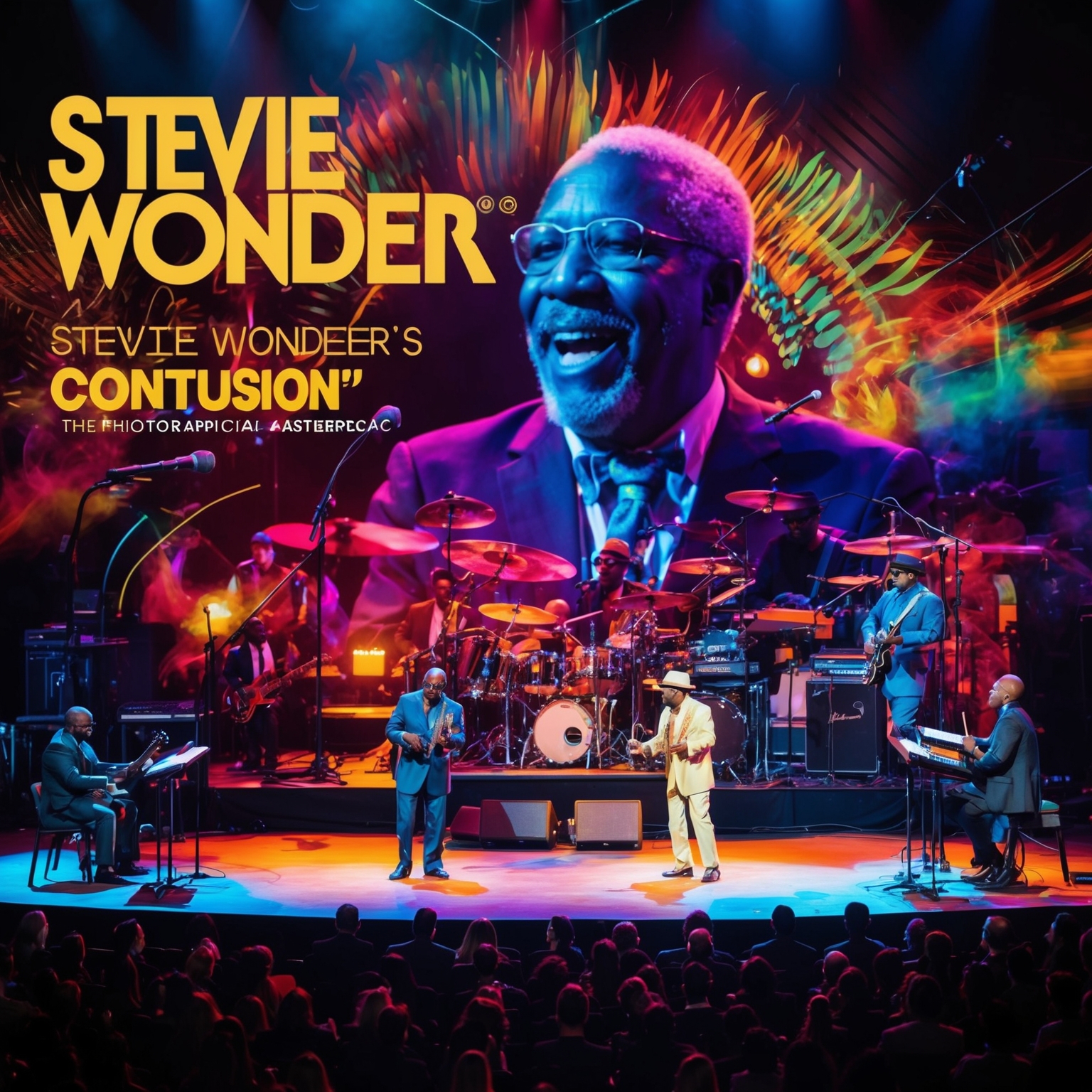
‘Contusion’, a jazz-fusion masterpiece from Stevie Wonder’s 1976 album ‘Songs in the Key of Life’, does not have an official music video, which is not uncommon for instrumental tracks from that era. However, the song’s vibrant energy and complex rhythm have inspired numerous fan-made videos and live performance recordings. These visual interpretations have allowed the song to maintain its popularity and have offered fans an engaging way to experience the track.
Enthusiastic fans and musicians have taken on the creative task of producing visuals that capture the essence of ‘Contusion’. Many of these videos showcase live jam sessions, and dynamic animations, or use visual storytelling that echoes the song’s intensity and spontaneity. These fan-made videos often feature vivid imagery and fast-paced editing, reflecting the complex, intertwining musical elements that characterize the song. Such creative endeavors demonstrate the song’s influence and the community’s appreciation for Stevie’s instrumental work.
The absence of an official video has not deterred the song’s reception or diminished its appeal. Instead, it has encouraged a collaborative spirit among creators who wish to pay homage to Stevie’s artistry. Live performances of ‘Contusion’ further add to the song’s legacy, with notable performances by Stevie himself. These live renditions capture the raw energy and musicianship that make ‘Contusion’ a standout track, allowing audiences to connect with its vibrant spirit and experience the magic of Wonder’s musical genius firsthand.
Intricate Composition and Unique Jazz Fusion
Discover the intricate musical structure of Stevie Wonder’s ‘Contusion’, a masterpiece combining jazz fusion and harmonic sophistication, illustrating a pinnacle of his artistic evolution.
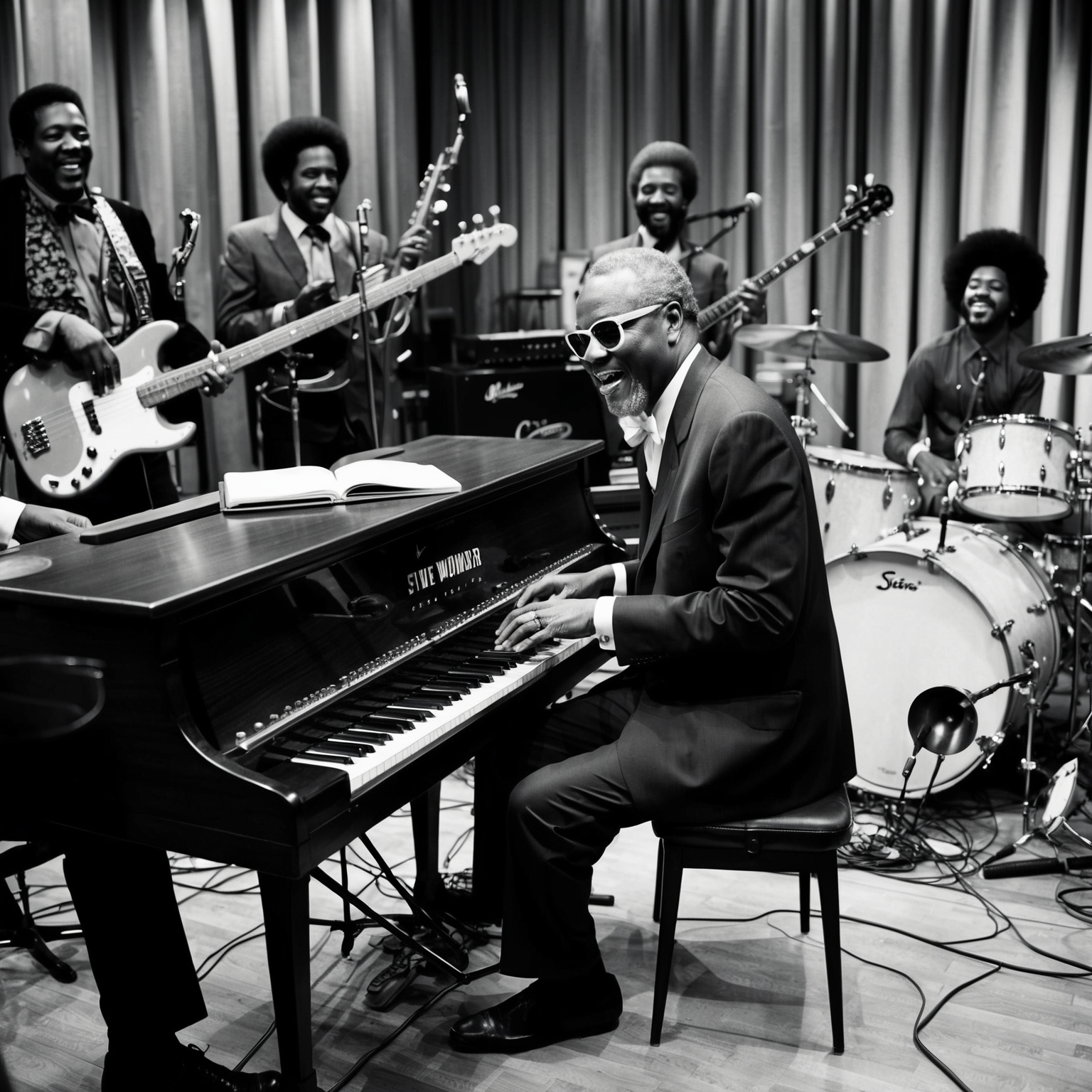
Stevie Wonder’s ‘Contusion’ is a dazzling display of intricate musical artistry, showcasing a complex and captivating arrangement. Written in the key of B minor, the song is a demonstration of Wonder’s adeptness in bridging pop, funk, and jazz genres. The chord progression is sophisticated and atypically complex for mainstream music, which is emblematic of the jazz fusion influences that pervade the track. With a tempo that sits briskly at 134 beats per minute, the song embodies a lively and energetic rhythm.
The melody of ‘Contusion’ is both flamboyant and rigorous, featuring irregular intervals and syncopation that contribute to its rhythmic dynamism. Wonder employs a rich harmonic texture, layering different instrumental voices that contribute to the song’s vibrant soundscape. Each instrument, from the signature clavinet, electric guitar, bass, to the punchy horns and dynamic drums, plays a vital role in painting the song’s auditory tapestry. The clavinet, in particular, adds a funky zest, while the guitars accent with jazz-inflected riffs and solos.
Placing ‘Contusion’ in the context of Wonder’s discography highlights its significance during his peak creative era. Its release on the album ‘Songs in the Key of Life’ marks a period of his discographic maturity, where he explored more avant-garde and experimental styles. Compared to his earlier works, ‘Contusion’ stands out with its instrumental form and absence of vocals, accentuating the sophistication of Wonder’s musicianship. Insights from the recording sessions at Crystal Sound Studio indicate Stevie’s penchant for meticulousness and perfection, which is vividly reflected in the complexity and precision of ‘Contusion’. These sessions were characterized by a wholly immersive creative environment, reputedly filled with long hours and relentless attention to detail.
Exploring the Intricacies of ‘Contusion’s’ Instrumental Lyricality
Stevie Wonder’s ‘Contusion’ spins a compelling instrumental narrative. The composition weaves intricate melodies and rhythmic patterns, conveying themes of struggle and resilience without traditional lyrics.

Stevie Wonder’s ‘Contusion,’ an instrumental track from his acclaimed album ‘Songs in the Key of Life,’ might not feature traditional lyrics, but it certainly conveys a strong narrative through its complex and vibrant musicality. Although there are no words to dissect, the essence of the composition tells a story, reflecting both the innovative spirit and profound emotional depth for which Stevie Wonder is celebrated.
Lyrical Themes and Messages: The central theme of ‘Contusion’ can be perceived through its intricate melodies and rhythmic patterns, which embody a blend of tension, resolution, and vibrancy, much like a lyrical narrative. The song’s thematic elements can be seen as exploring the dynamics of struggle and triumph, symbolized by the energetic and often tumultuous interplay between instruments. Much of Stevie Wonder’s work from this era reflects his engagement with the socio-political landscape, and although ‘Contusion’ contains no direct commentary, the intensity and emotion conveyed through the music resonate with themes of resilience and hope.
Narrative and Storytelling: In ‘Contusion,’ the story is narrated through an instrumental dialogue between the various musical elements. Each instrument contributes to a conversation, setting the scene for a musical narrative that evokes images and emotions akin to a lyrical tale. The fluid transitions suggest a journey, marked by dramatic shifts in tempo and mood — an instrumental storytelling technique that effectively compensates for the absence of words.
Use of Literary Devices in Music: Although devoid of traditional literary devices found in lyrics, ‘Contusion’ excels in musical metaphor and alliteration through its use of repeating motifs and contrasting sections. The track cleverly employs a recurring bass line and melodic phrases, acting as a ‘chorus’ that gives structure and familiarity, much like a lyrical refrain. These musical devices enhance the emotional impact, creating an experience for the listener that parallels the effect of powerful storytelling through lyrics.
Cultural and Social Influences: While the track may not directly reference any cultural or social issues through words, its complex, jazz-infused soundscape speaks to Wonder’s influences and contributions to a period of groundbreaking experimentation and cross-genre innovation in the music industry. His ability to convey such depth, even in the absence of lyrics, demonstrates his masterful command of musical emotion and narrative.
Emotional Impact and Relatability: For listeners, ‘Contusion’ evokes a spectrum of emotions, from excitement to introspection. Despite the lack of a lyrical story, the emotional weight carried by the instruments allows audiences to project their own narratives onto the music. This adaptability is a testament to Stevie Wonder’s genius in crafting sonic landscapes that engage and resonate on a personal level.
 Did you know? Stevie Wonder’s Contusion is a jazz-fusion gem with NO lyrics! Dive into the funky beats and let the music speak!
Did you know? Stevie Wonder’s Contusion is a jazz-fusion gem with NO lyrics! Dive into the funky beats and let the music speak! 
 #StevieWonder #MusicMagic #JazzFusion https://bit.ly/4dZetFl
#StevieWonder #MusicMagic #JazzFusion https://bit.ly/4dZetFlClick to Tweet

